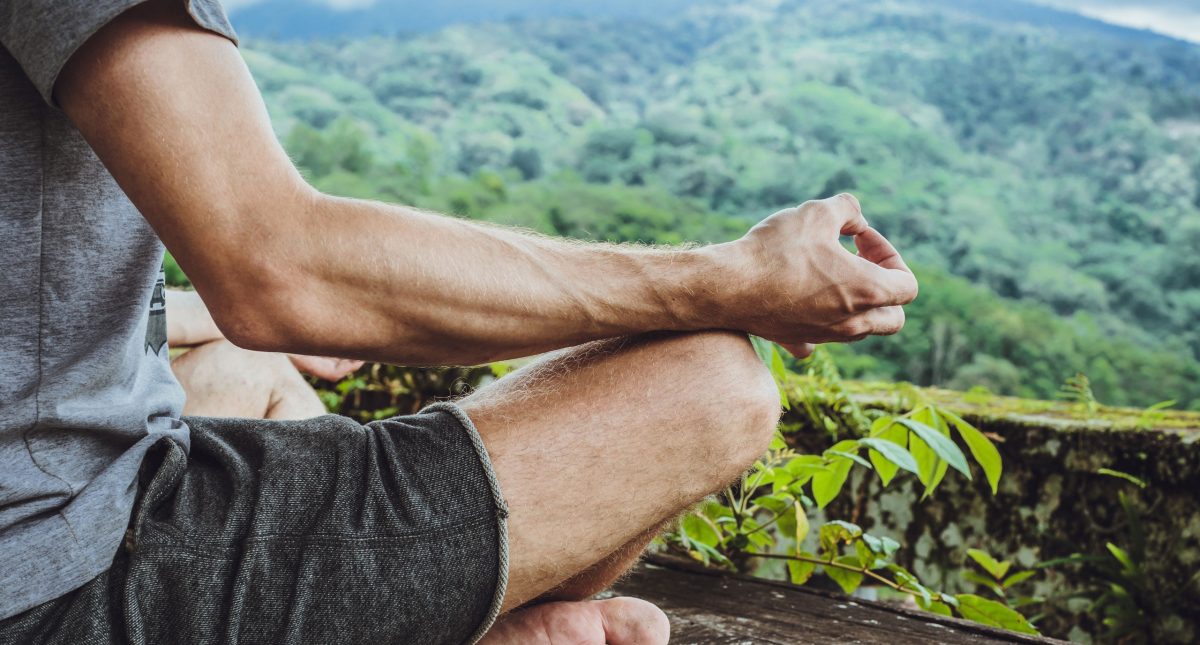Last article we discussed different types of meditation and why it’s important that everyone spends time practicing meditation. This article we are going to discuss how to get you meditating quickly and easily. Really, it isn’t a complex science or hard to do. Actually, it is quite easy but you do need to have discipline. It is the consistency in your practice that you will reap the results. If you only practice for a day or two , you won’t receive the benefits you’re looking for. If you practice regularly and diligently, your benefits will be long term.
It’s like working out at a gym. If you exercise for three days and stop, you’re not going to be in tip top shape although it is a good start. If you want to be in top physical condition, you have to work at it regularly. In doing so, you will look and feel better as time goes on. It won’t happen right away and that’s the same with practicing meditation. You have to be patient and consistent to receive any kind of meditative benefits. Make sense?
With that said, here are the five key tips to get you started on exploring stationary meditation.
1. Location and environment:
It is crucial that you set a place to practice meditation where you will be distraction free. There is nothing worse than meditating and getting disrupted. I remember vividly having my dog lick me in the face in the middle of meditation. Talk about a wake up call. When my children were younger, they would come in and sneak up me to surprise me, often times startling me. It totally took the zen out of my meditation. Find a place where you are distraction free. It could be in your bedroom or perhaps you have an extra room in your house that is less used. It could be in a quiet place at work. You may need to wake up a bit earlier or stay up a little later to get your time in. For me, I have a meditation pillow right in front of my bed. In the morning I wake up, use the bathroom and go right to meditation. I also have a meditation room in my martial arts school where I am able to go in the middle of the day. It doesn’t matter as long as you find a place that you could call your own for that time.
2. Meditation position:
Ok, now this is very important and you have to listen to your own body. When I introduce meditation at seminars I will either have clients do it standing or sitting in chairs. (Mostly sitting). When sitting in a chair, it is important to keep your back erect. I mention to them that meditation is not nap time so you shouldn’t lean back in the chair and dose off. Your back needs to be straight so your key energy points are in alignment. Where you slouch over or bend your spine, the energy will not be able to flow freely. These energy points are called chakra’s and they go from your lower abdomen to the top of the crown of your head. If you choose to sit on the floor be sure to have a pillow under you so you could elevate your hips a little higher than your feet. This will help you keep your back aligned. You could sit with your legs crossed, half lotus position or full lotus position. Half lotus position is when one leg is crossed over the other and full lotus is when both legs are crossed above the other. The lotus positions require more flexibility but with consistent practice, you’ll be able to do so. More importantly than how you sit is that you have your back straight and hips are elevated a bit. Place your hands on your lap with the left hand flat and your right hand on top. Your thumbs are lightly touching and your body is relaxed. This position is designed to circulate and generate your own personal energy.
3. Breathing properly:
Now that you found your location and you are sitting correctly, it is time to focus on your breathing. If you have read the previous article, I discussed the importance of breathing correctly. Since it is the most crucial element in meditation, let’s review. First, be sure to breathe through your nose with the inhale and exhale. The hairs in your nose act as filters eliminating toxins coming in to your body. As you inhale your lower stomach will expand outward utilizing your diaphragm allowing your breath to be driven from your lower abdomen. On the exhale, your stomach retracts back in. To start, inhale for a count of three, hold for a count of three and exhale for a count of three. Do your best to relax your body as you breathe so the energy could move freely throughout your body. Remember, the breathing moves the energy and the relaxation allows the energy to transfer through your body. Be patient when starting because it may feel very awkward in the beginning. Remember, consistency in practicing meditation is the key to success.
4. Counting your breaths:
Now that you are in a quite space, sitting and breathing properly it is time to start the meditation. I strongly recommend you start with a simple focus meditation. Every time you take a full breath; inhale and exhale you will associate the breath with a number. For example, an inhale and exhale would be “one”, inhale/exhale “two”, inhale/exhale “three” and so on. Make sense? When you practice the focus breathing meditation and you count up to 50 breaths and down to 50 to 1 is about a 15 minute meditation. If you count your breaths from 1 to 100 and down from 100 to 1 is about a half hour meditation. To start, I recommend counting 1 to 20 breaths and back 20 to 1 for about a 10 minute meditation depending on the length of your breaths. If a ten minute meditation is easy, increase the numbers which will increase the time. This is the very same meditation I started in the beginning of my training and it worked great. One thing to note; should you lose count don’t worry about it. Pick up where you think you left off or start over.

5. Thoughts:
Ahhh, now comes the challenging part. What do we do when thoughts enter the mind? That is one of the most common questions and concerns I hear. There is no doubt that there will be thoughts to enter your mind. There’s no denying it. When your thought comes in, you have to allow it to come in and allow it to go out just the same. Do not resist the thoughts or give it any attention. If you do, your thoughts will be focused on the thought and your mind will become busy. Only focus on your counting and that will help slow down your brain waves and allow your mind to slow down as well. Once you get used to this, and your mind starts to slow down to the point where your thoughts are coming from your sub-conscious mind, then you have moved past the busy mind. This is when your thoughts are meaningful. It could be a solution to a challenge your facing or a new game changing idea. If that’s the case, great job! That means you have slowed down your brain waves and thought energy is flowing freely. Please put a pen and paper next to you when you practice meditation. When those important thoughts arrive, capture them on paper and continue on with your meditation.
As I mentioned previously, it is the consistency in mediation that is most important. Now you have some tools so start practicing meditation. Why not start tomorrow? Simple, as soon as you wake up in the morning sit down and practice. Preset your place, set up your chair or pillow and make it happen. You’ll be happy you did.
Sometimes I will listen to a meditation cd and other times I have no music. There is no right or wrong and it is totally up to you and your preference.
I am really excited to share more on how to practice meditation. Empowered Mastery is in the process of organizing an event where you I will show you everything explained in this article. Learn what we have in store for you here.
Next article I will dive deeper into alternative forms of meditation and mindfulness.
All the best and I look forward to hearing how your meditation practice is going. If you have any questions, please feel free to send an email to me at cberlow@empoweredmastery.com or write a comment and I will respond back to you. I promise.
Respectfully,
Chris Berlow

